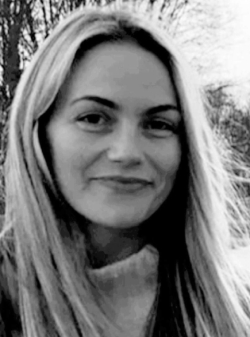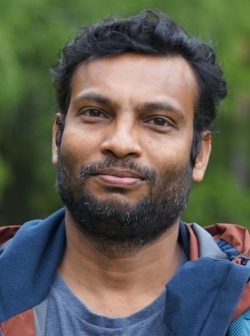Arrangementer - Side 12
Secondary processes in the pegmatites of the Larvik Plutonic Complex, Norway
Title: Multiscale interactions in the Labrador Sea: from submesoscale circulations to climate scales
Speaker: Annalisa Bracco, Georgia Institute of Technology
Ph.d.-kandidat Marta Trodahl ved Institutt for geofag, Det matematisk-naturvitenskapelige fakultet, vil forsvare avhandlingen Vortices in the Subarctic Seas and their interactions with bottom topography for graden Philosophiae Doctor.
Morphologies and gas emissions from the Shamakhy-Gobustan mud volcano region, Azerbaijan
Identification and Characterization of Faults Using Deep Learning
Fault interpretation in high-resolution P-cable seismic data - Hoop Fault Complex
Title: How consistent are observed and simulated records of volcanic eruptions?
Speaker: Gabi Hegerl, University of Edinburgh
Sustainability and degradation of chemical deicers in the Gardermoen Aquifer: Iron and manganese redox processes
De-risking of faults associated with picking strategies: Implications for assessing fault growth and reactivation potential for CO2 storage in the Northern Horda Platform
Probabilistic analysis of quick clay slopes in Moss
Reconstructing possible causes for the darkening of Skagerrak coastal water in the Hvaler estuary during the past century.
Detecting land subsidence using multicriteria decision analysis and machine learning in Skøyen, Oslo
Feature detection in glacial channels using drifters (sic)
Qualitative and quantitative study of known exoplanets and exoplanetary systems.
Title: Accelerating climate science with machine learning: Earth system emulation
Speaker: Duncan Watson-Parris, University of Oxford
Prediksjon av mettet infiltrasjonsrate ved bruk av fjernmåling og nevrale nett.
Isolating the influence of sea ice on Arctic warming in NorESM2.
Ph.d.-kandidat Md Jamilur Rahman ved Institutt for geofag, Det matematisk-naturvitenskapelige fakultet, vil forsvare avhandlingen Seal, and overburden rock characterization of potential CO2 storage sites in the northern North Sea for graden Philosophiae Doctor.
Reconstruction of the marine paleoenvironment and paleoecology of the middle Holocene in the Oslo fjord area.
Low-frequency wave propagation in an ice-covered Arctic Ocean. Modeling with the spectral element package SPECFEM2D.
Infrastructure exposure to shallow landslides in Upper Gudbrandsdalen; Predicting the impact of climate change using the TRIGRS and RAMMS models.
The vertical structure of currents in Arctic and sub-Arctic regions.
Direct Solution for Closed f /H Contour Dynamics in High Latitude Ocean Basins.
Estimering av Snøens Vannekvivalent i Nord-Amerika med Undersøkelse av Generaliseringsfeil med XGBoost og Random Forest.
Hydrous Regions of the Mantle Transition Zone Affect Patterns of Intraplate Volcanism.




